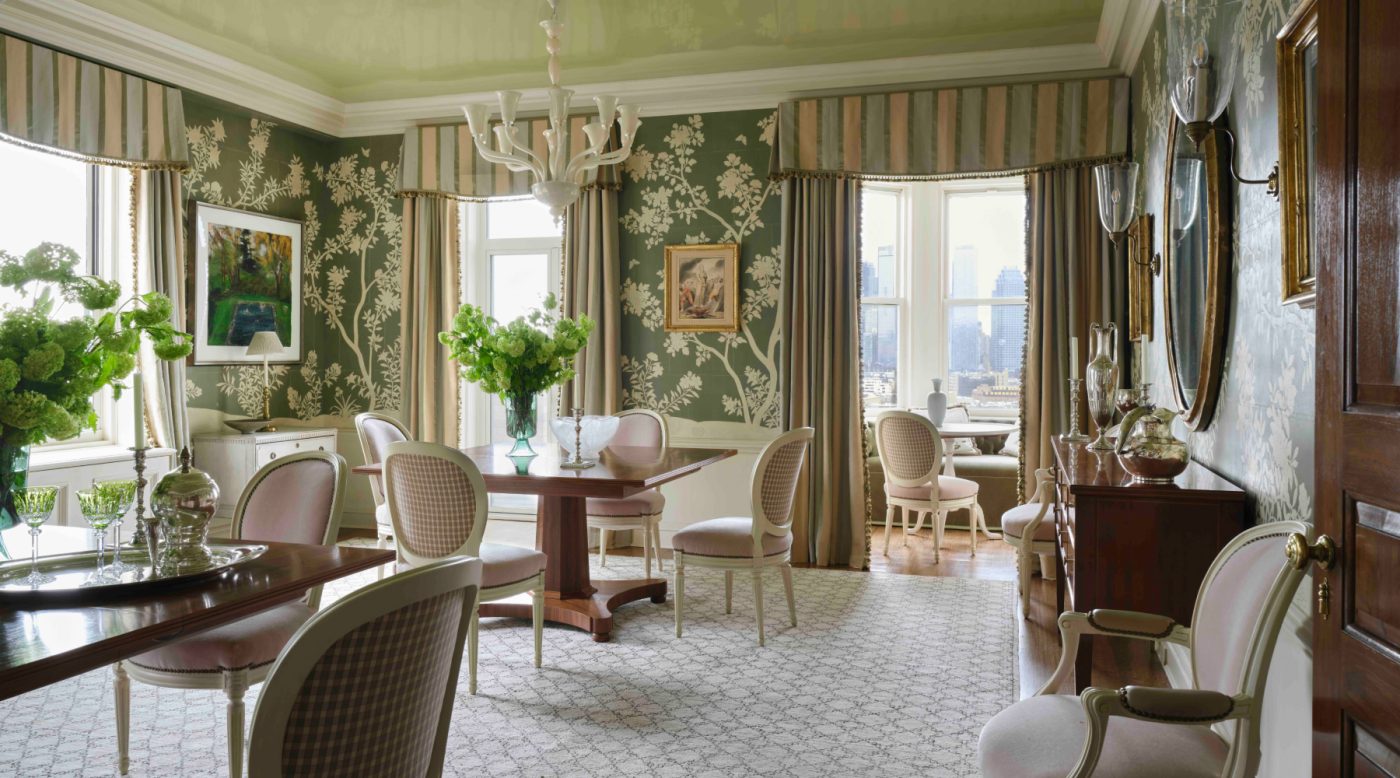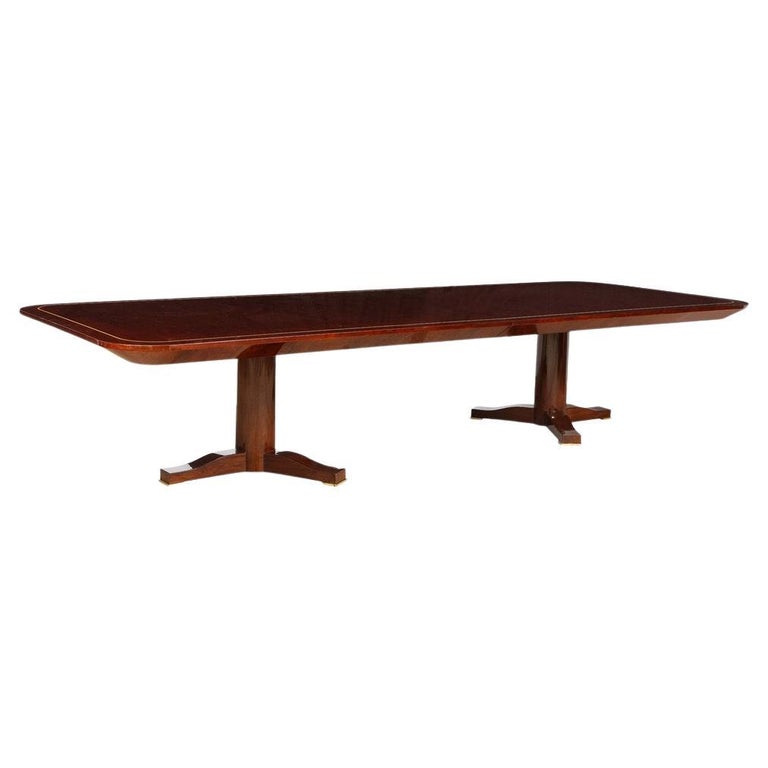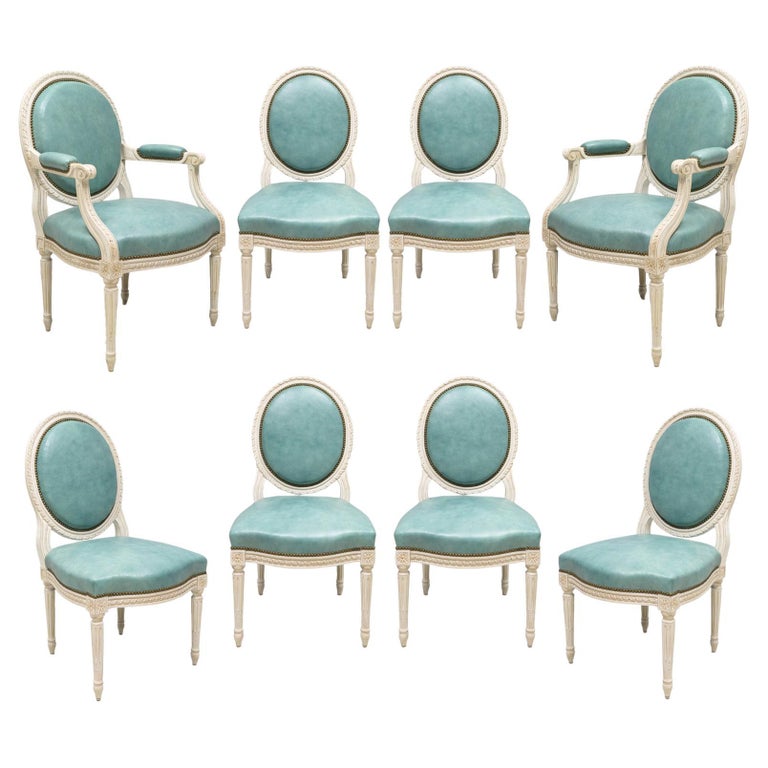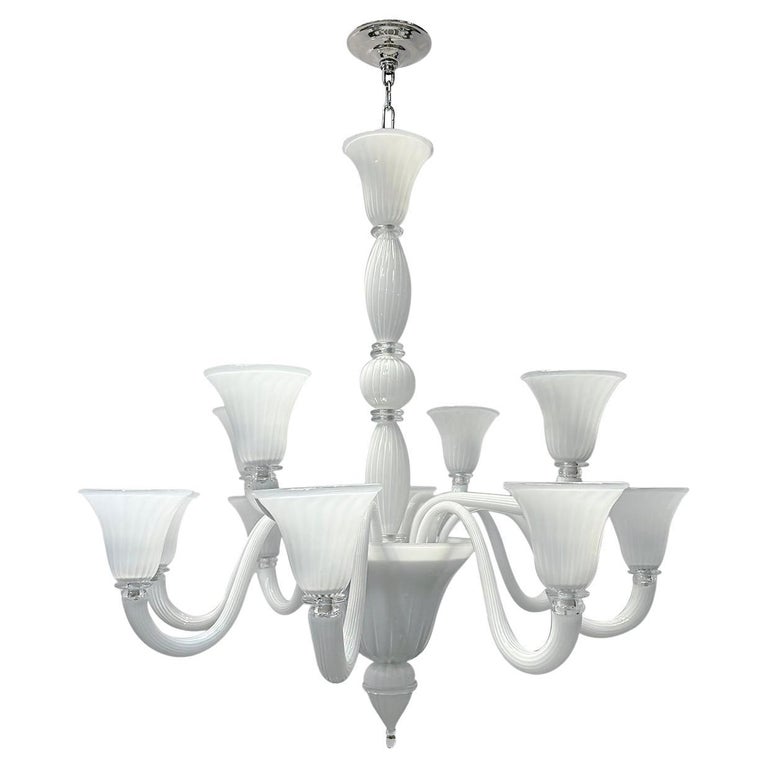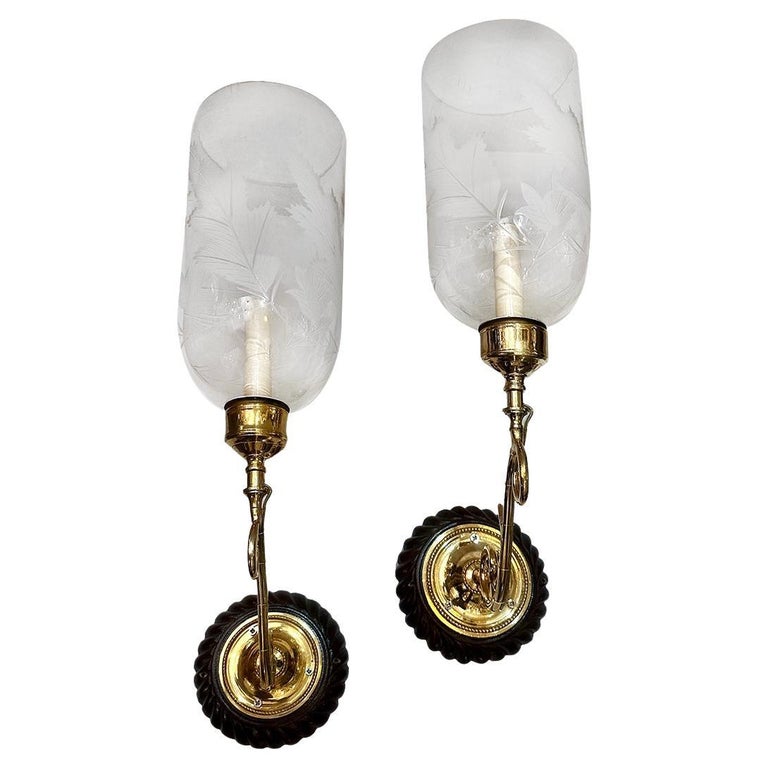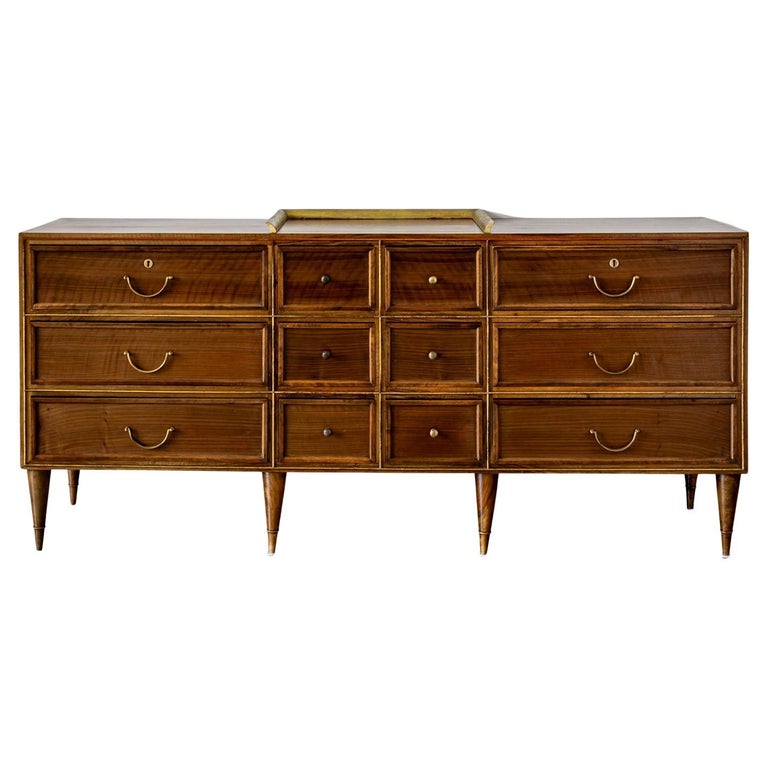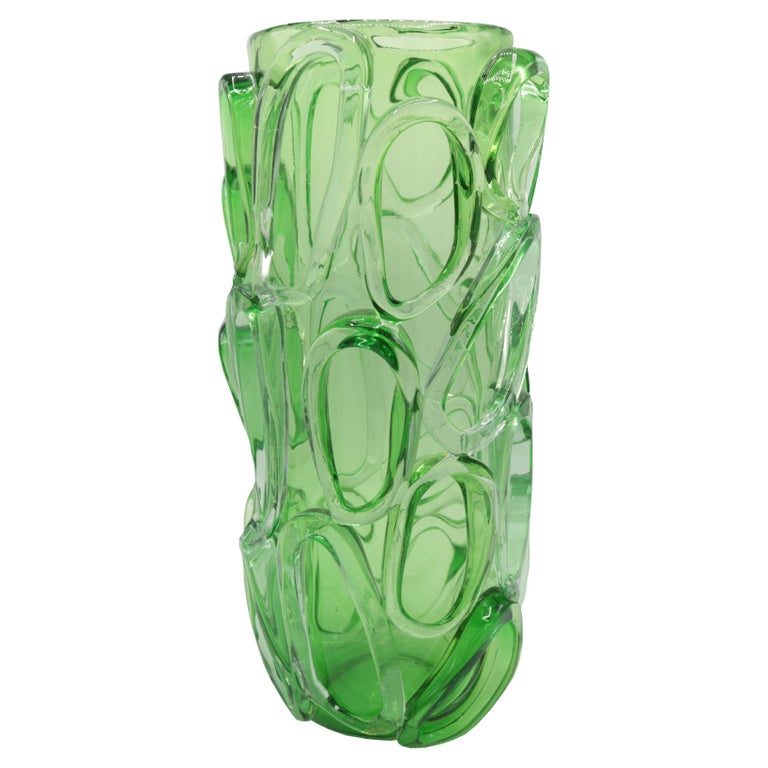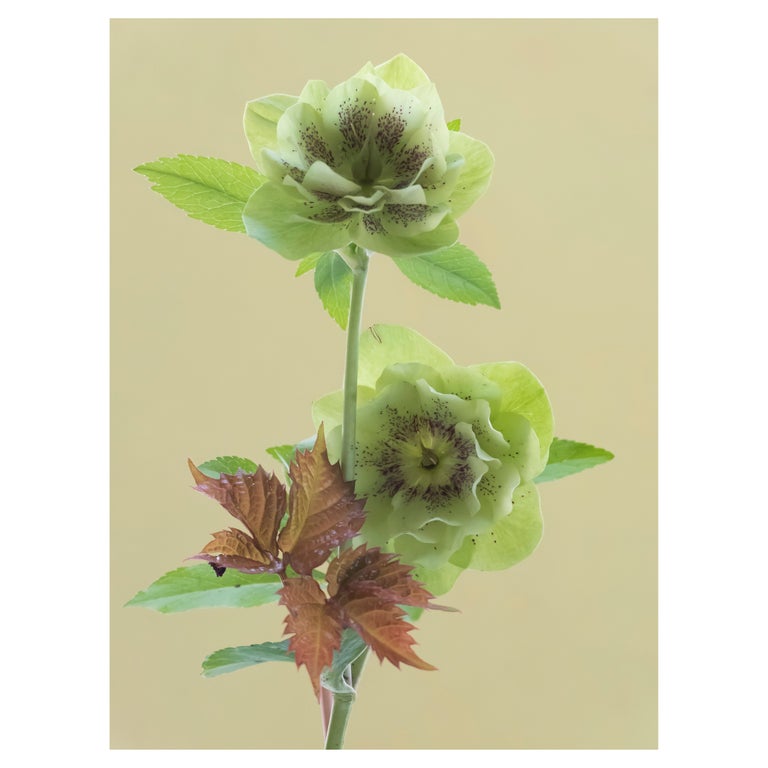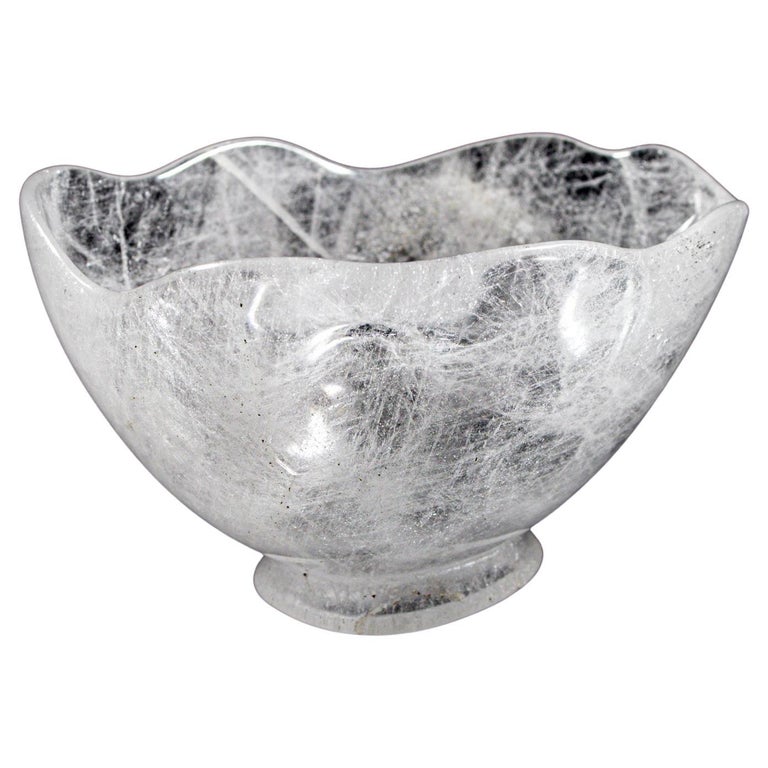April 27, 2025Apartments, like children, grow up. This is arguably one of the greatest joys of the empty nester. With their offspring beginning to establish families of their own, parents can reclaim spaces and redesign their residence to more fully embody their new stage of life.
Husband-and-wife designers Jesse Carrier and Mara Miller, of Carrier and Company — a member of the just-announced 2025 class of the 1stDibs 50 — recently helped the owners of a gracious 4,000-square-foot Manhattan apartment do just that.
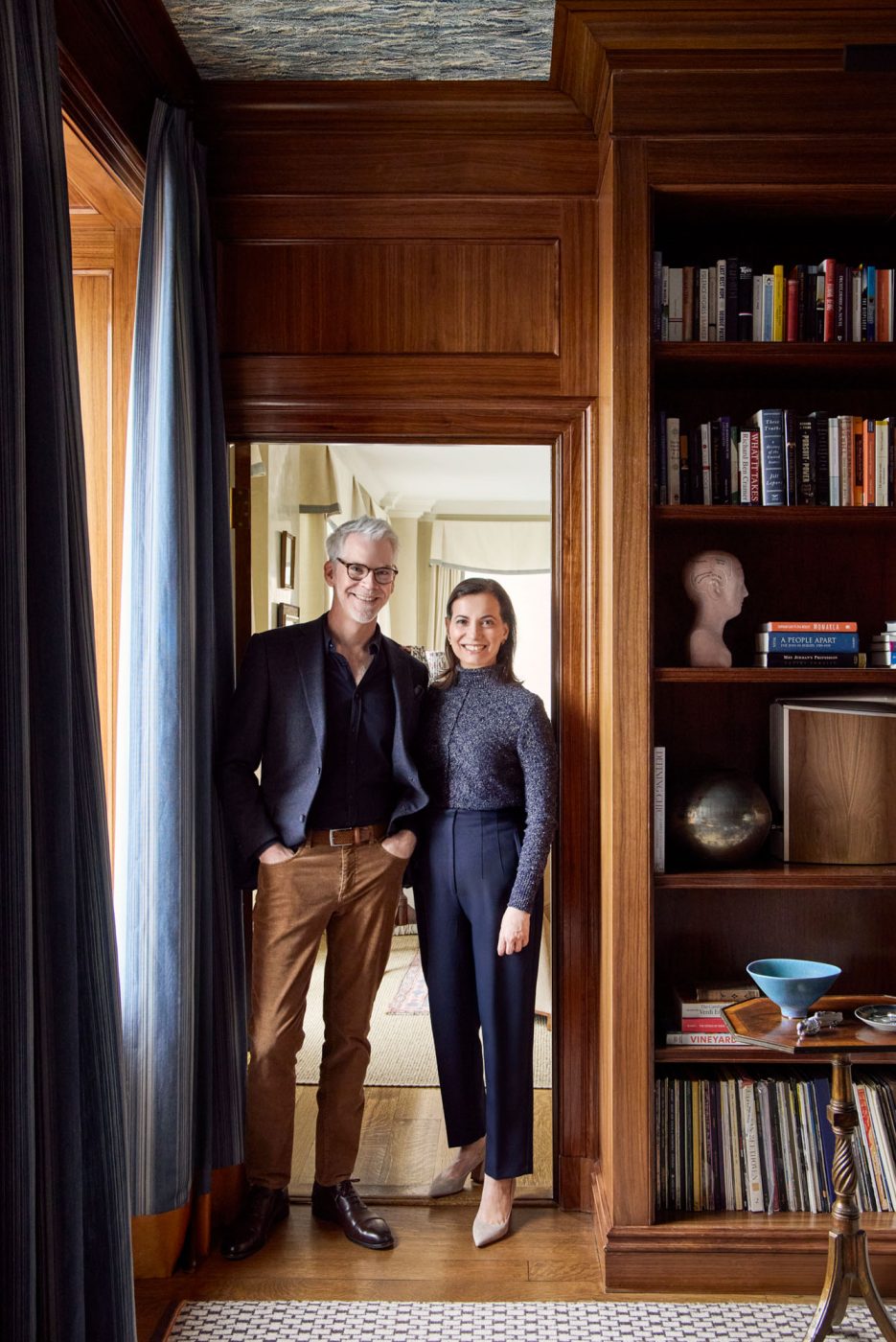
This was not Carrier and Miller’s first go-round with the elegant four-bedroom prewar. They were responsible for its previous family-friendly scheme, completed in 2016, when the couple’s two children were on the verge of entering college. So, the designers had a long familiarity with the clients’ tastes and lifestyle. Voracious readers and inveterate party hosts, says Carrier, “they wanted a fresh start,” in a home where those interests could flourish.
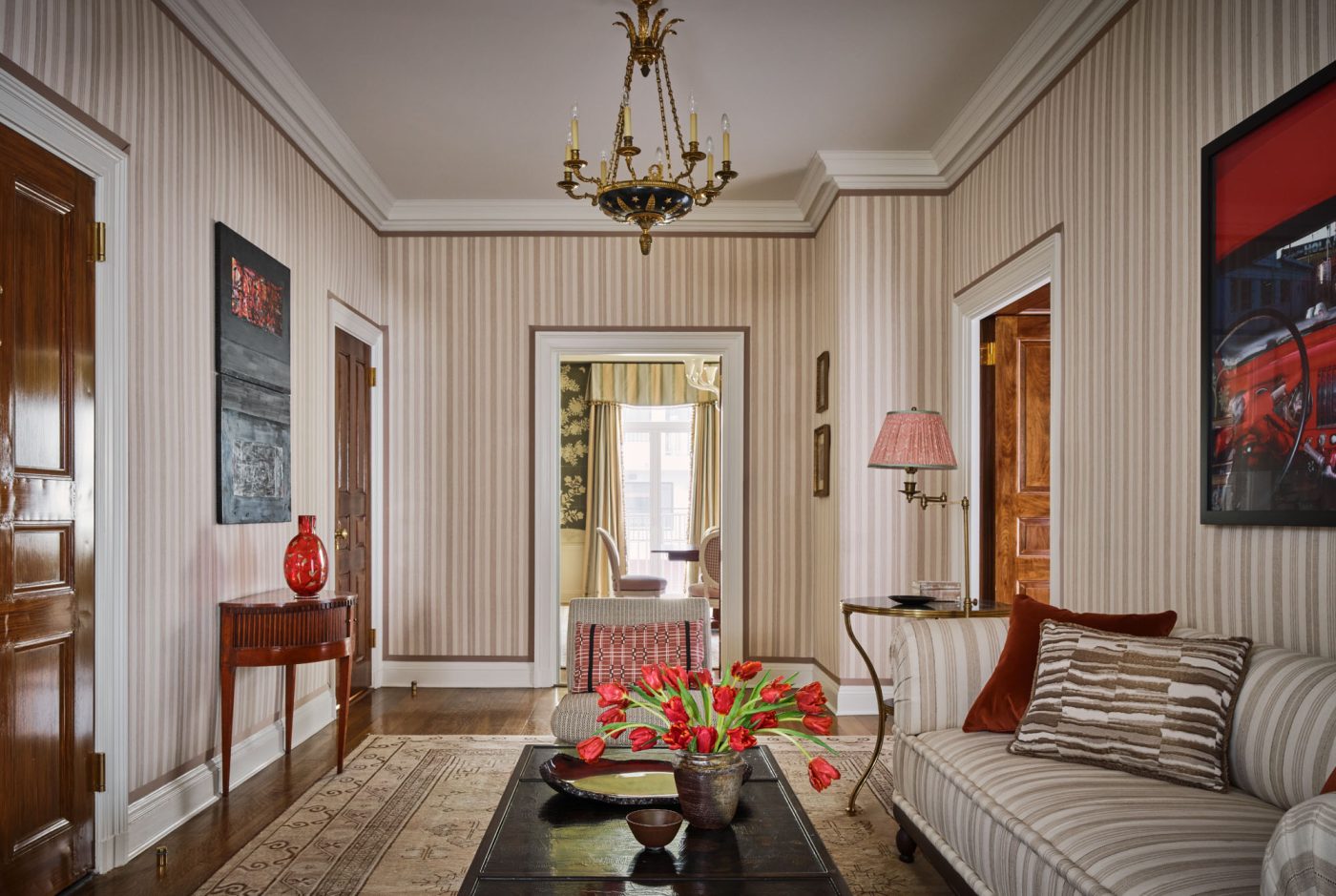
“The former incarnation of the apartment was stylistically similar, in that it was traditional,” observes Carrier. “But mainly due to time constraints and the wear and tear of kids and pets, we utilized the majority of the clients’ own furniture the first time around, which included some very fine heirlooms that still reside there: the piano, the living room and library rugs and some antiques. But we all understood there would ultimately be a phase two once the children and pets had moved out.”
This transformation is instantly apparent inside the primary entrance. Most prewar foyers are purely transitional and appointed to impress, with elements like marble checkerboard floors, elegant sconces, matching chests or consoles and a crystal fixture overhead.
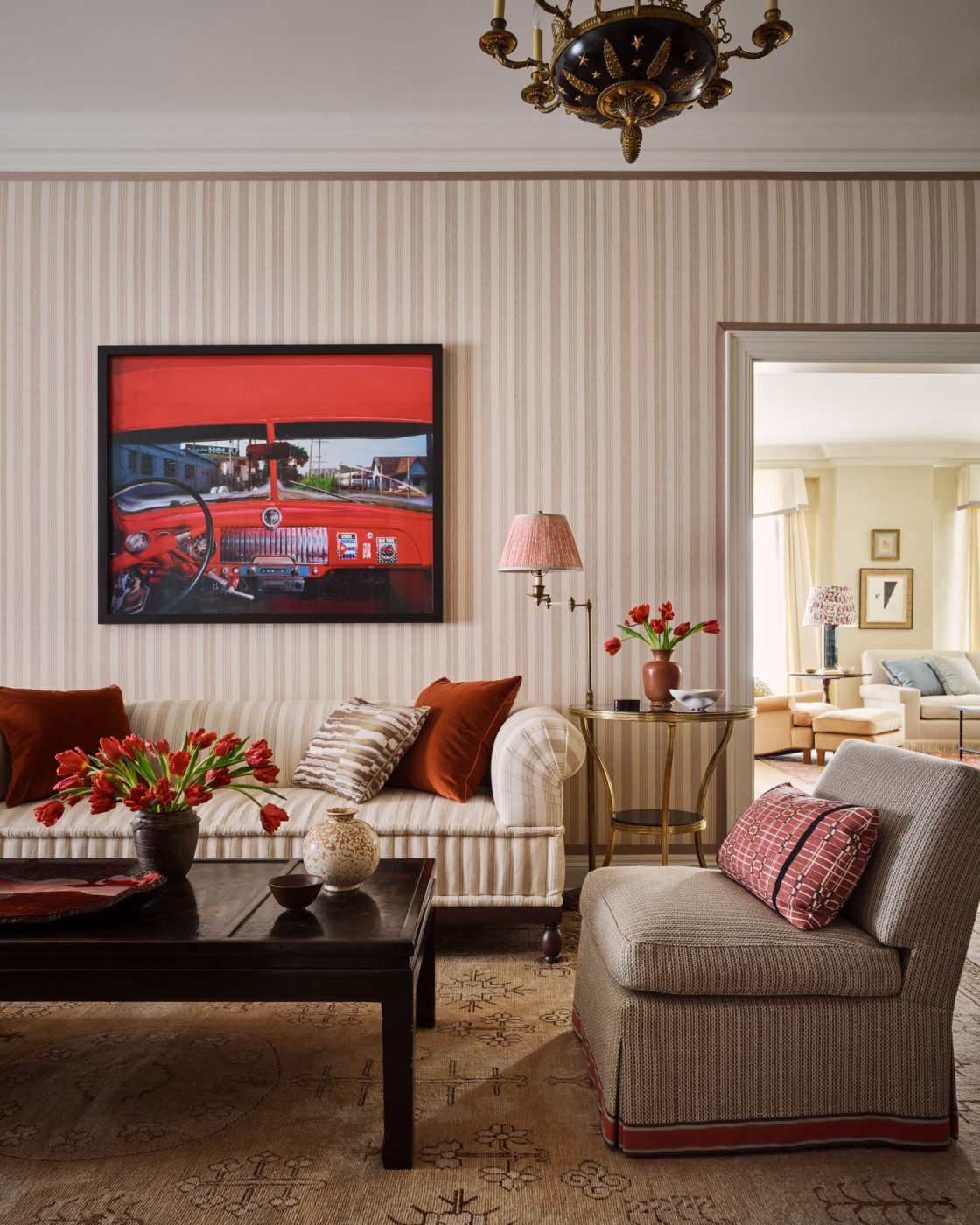
Carrier and Company reimagined the space as fully livable rather than merely a pass-through between public rooms. And rather than grandeur, they created a room infused with their signature style — grounded in tradition yet exuding unpretentious modern comfort. The designers dialed down any potential formality by upholstering the walls in a ticking-stripe fabric and laying a circa 1920 East Turkestan Khotan carpet from Galerie Shabab, both materials in neutral colors that invite your shoulders to drop.
The ticking continues onto a mattress-style sofa. “It’s a traditional take on a daybed form,” says Carrier. “Using the same fabric camouflages it into the wall and helps reduce the bulk of the upholstery.” Black-marble-topped gueridons from the 1950s, discovered at Carlos de la Puente Antiques, impart a sense of modern — yet easy — elegance, while a large-format Alex Harris photo of a Havana street viewed through the windshield of a red 1951 Plymouth thoroughly contemporizes the space. It’s more sitting room than entry, and it beckons visitors to make themselves at home.
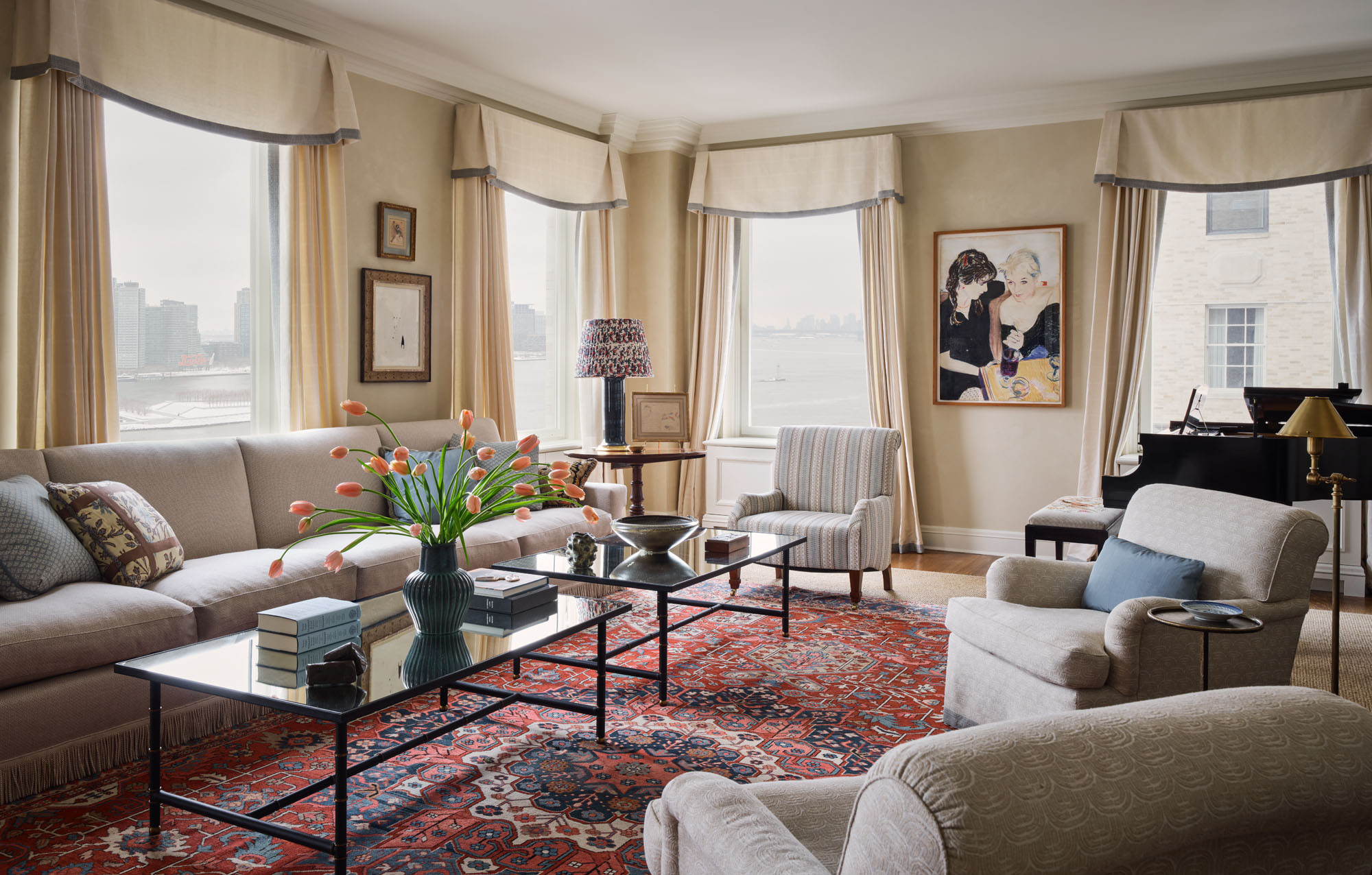
To the right is the expansive living room. In its previous life, seating had been huddled around the fireplace. The designers redid the furniture plan to enhance the crowd capacity, commissioning a fringed English-style sofa, upholstered in a soft ivory fabric and measuring more than 12 feet long, that had to be constructed on-site because it wouldn’t fit in an elevator. In front of this they placed a pair of 52-inch Jacques Adnet–inspired coffee tables whose antique mirror tops, Miller explains, “bounce light, making them feel less massive.”
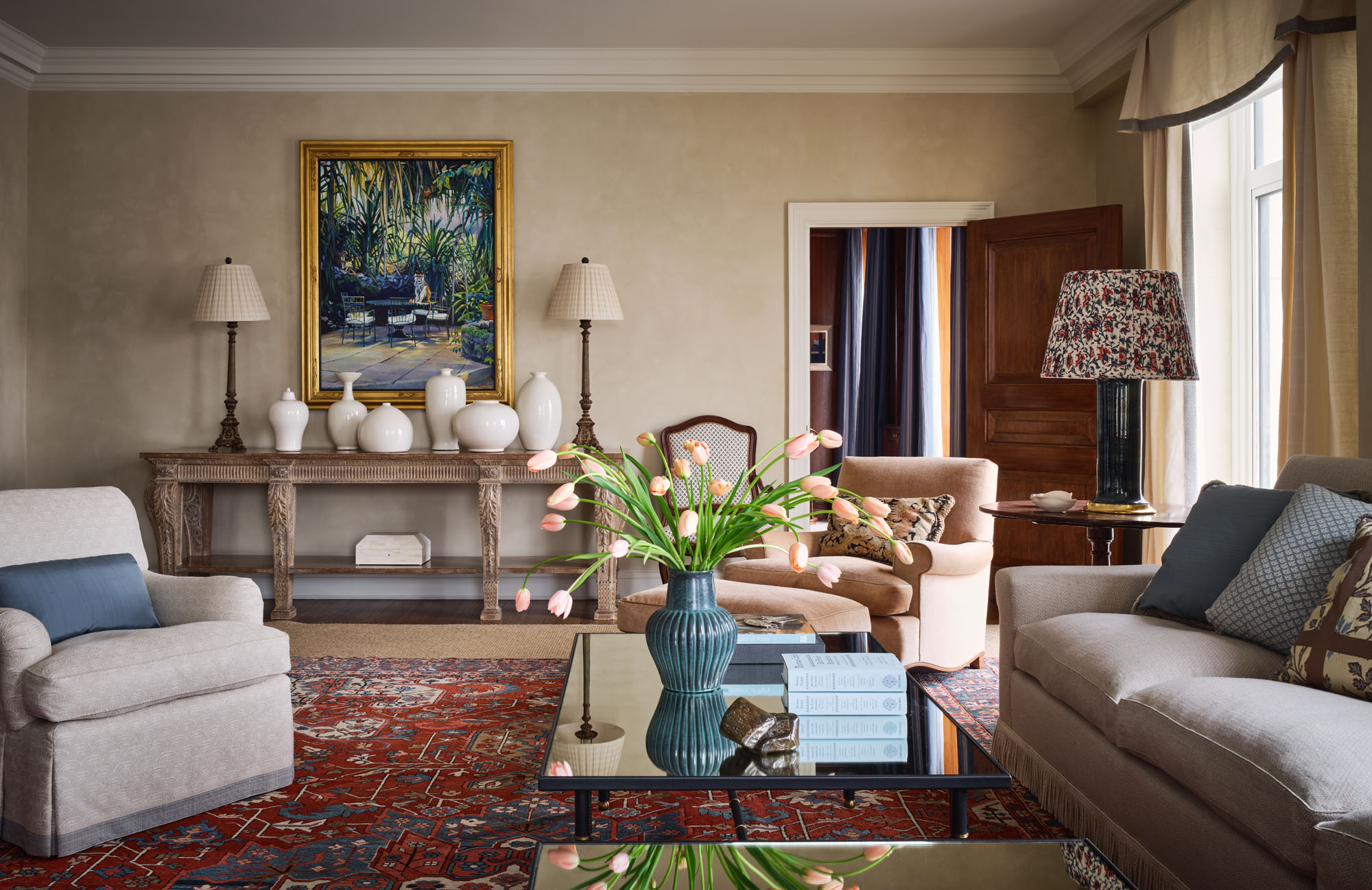
The clients’ red circa 1900 Persian Heriz Serapi rug grounds the space, which otherwise features mostly subtle, tone-on-tone upholstery patterns in soothing creams. “The space was meant to be a palette cleanser,” Miller says, referring to the fact that while most of the apartment’s interiors have graphic patterns or vibrant color palettes, the living room is monochromatic except for the rug.
The room is also what Carrier describes as a “workhorse,” not only because it accommodates a large number of guests but also because it packs in function. He cites as an example the palatially proportioned 20th-century Louis XIV–style console from Nicholson’s Antiques, which conceals suede-lined drawers behind its carved details.

“It’s a place where they can set up a bar and where drink-making equipment is stored,” he says, adding that the piece’s cerused-oak finish tones down its imposing presence, while the neutrality of the surroundings ensures that “nothing is a scene stealer.”
The dining room bids farewell to the neutral palette. The walls are clad in a deep-verdigris-toned Gracie wallpaper. “The modernity of the wallpaper print is an updated nod to traditional,” Miller says of the abstracted design of flowering trees and butterflies. “It’s graphic, still lovely but cleaner and more modern. The ground color looks like a patina.” The ceiling, lacquered in a fresh spring green, supports two white Murano-glass chandeliers acquired from Thomas Gallery.
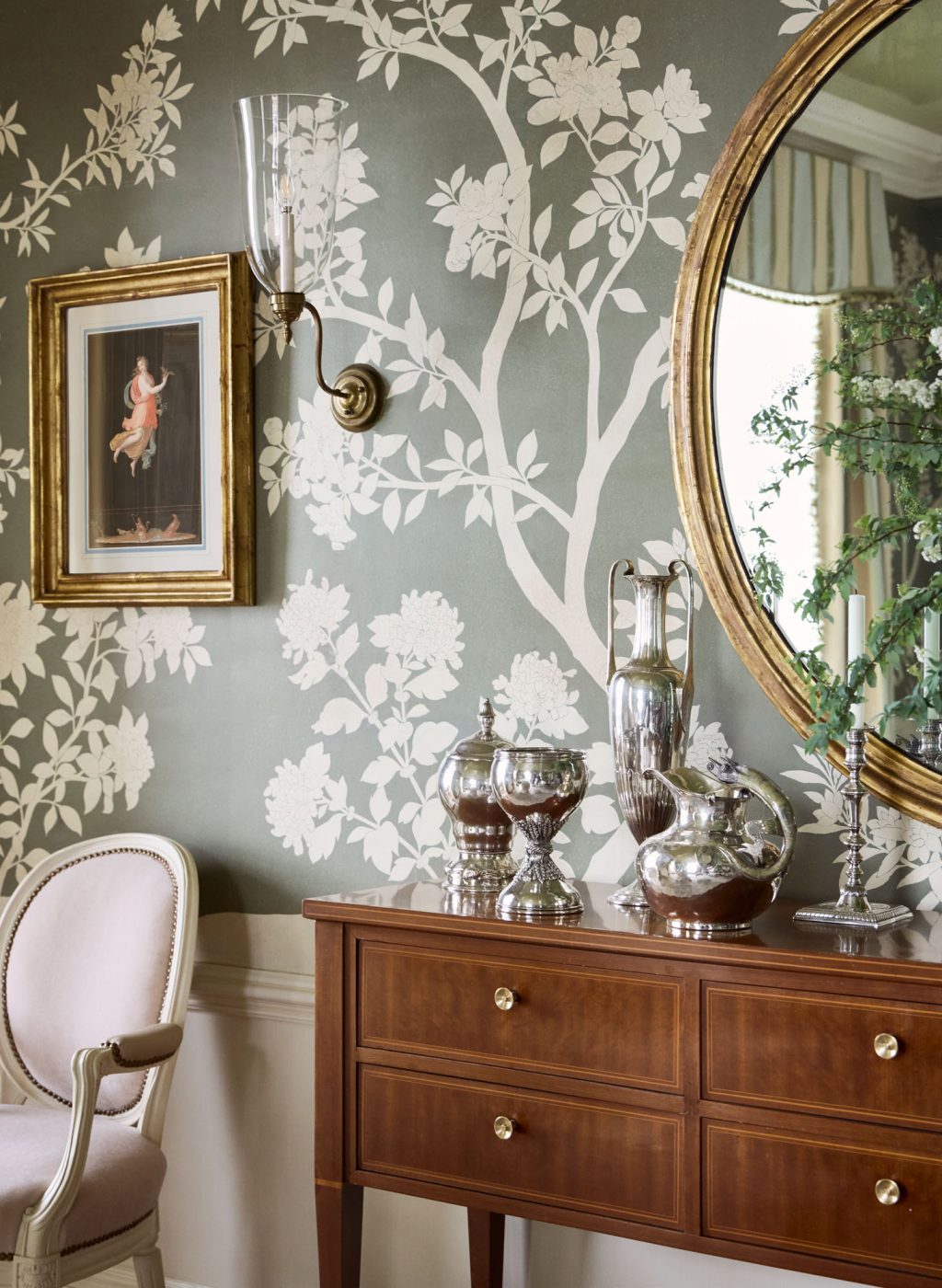
“There’s something continental about this room,” says Carrier. “We mixed pieces representing a lot of eras and styles.” Among these are a 1950s Paolo Buffa sideboard from Donzella Ltd.; two 19th-century Gustavian-style Swedish commodes from Balsamo; a Gustavian pedestal table from Jacqueline Adams Antiques, which pulls up to a banquette in a window bay; and silver serving pieces from Karl Kemp Antiques that span design eras — from an 1893 Art Nouveau tray to an Art Deco covered vase made in Germany in the 1930s.
Next door, the library accommodates only a portion of what Carrier terms “a lot of linear feet of books” owned by the couple. (More on the rest later.) The emphasis here is on comfort, with roomy barrel-backed chairs and a George Smith sofa set around a giant button-tufted leather ottoman.
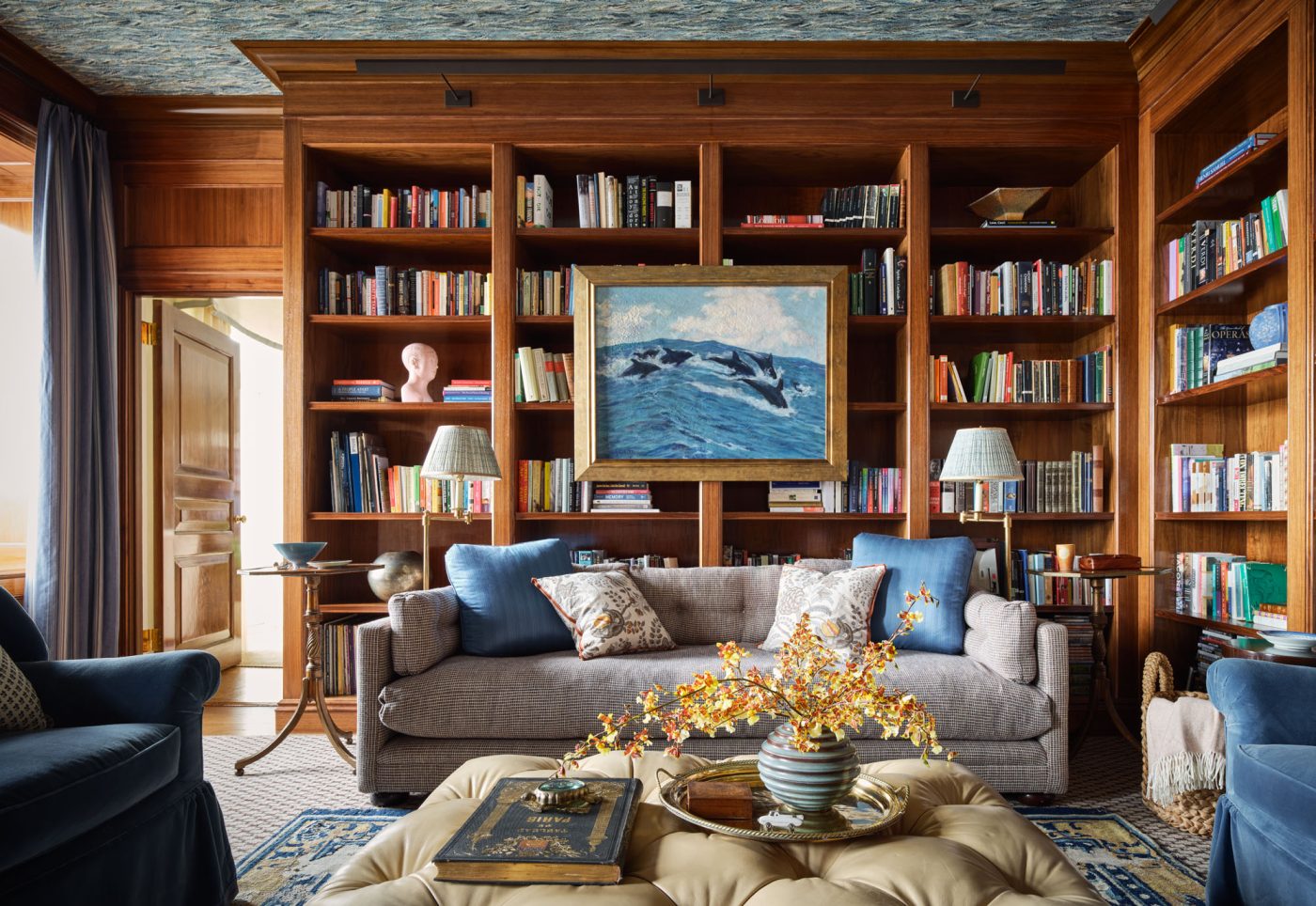
Amid the richly polished millwork and neutral beiges, the dominant accent color is a saturated blue, expressed in the clients’ own Chinese Art Deco carpet, as well as the blue velvet–covered chairs and the Florentine marbleized paper on the ceiling.
More books live in the wife’s office, a coral-colored fantasy that is part of the primary suite and also serves as her dressing room. The jumping-off point here was a custom de Gournay floral wallpaper. “She didn’t want pink,” recalls Carrier, “but she wanted something feminine. Because the color is so vibrant, we decided to embrace it.”
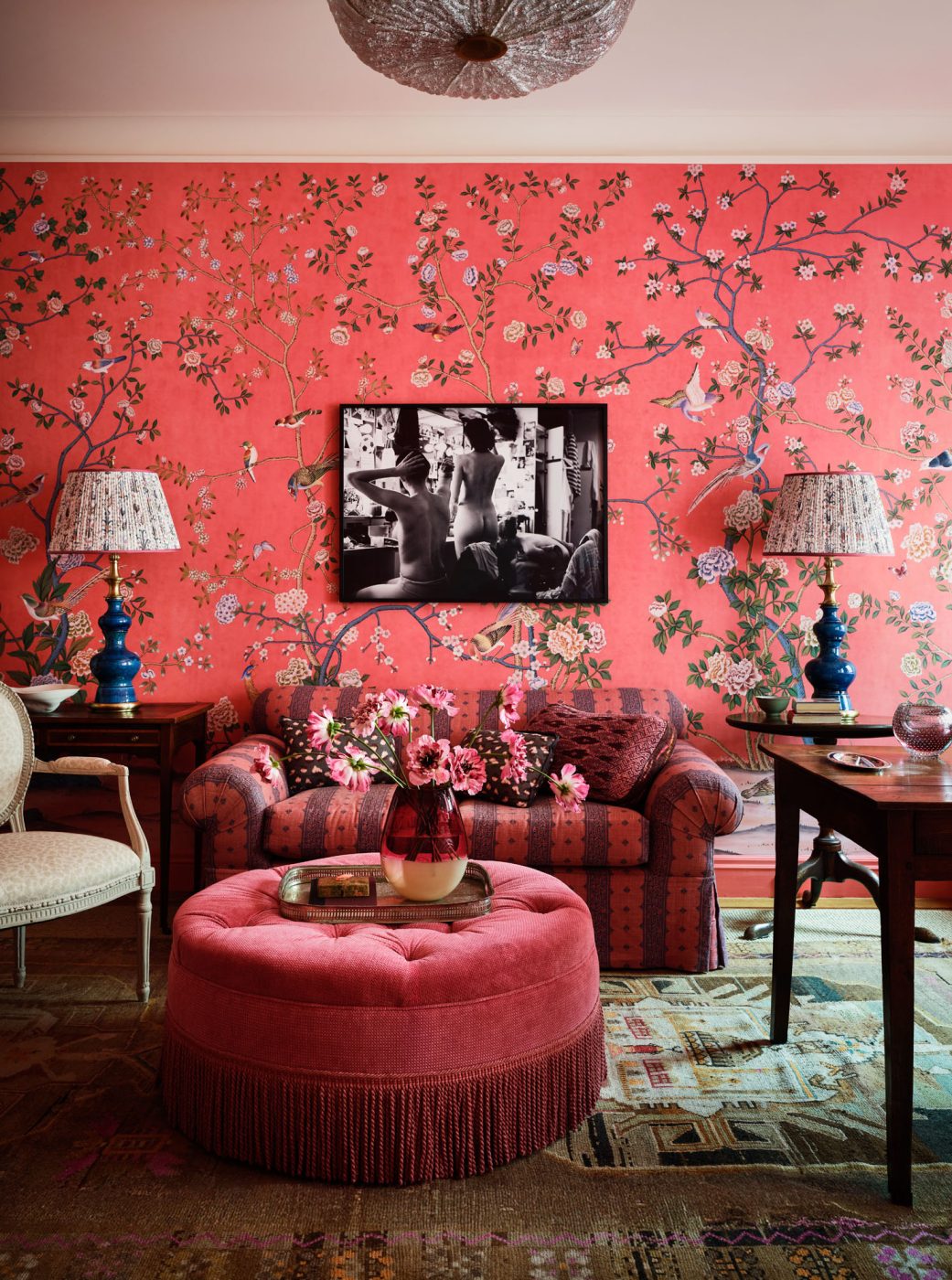
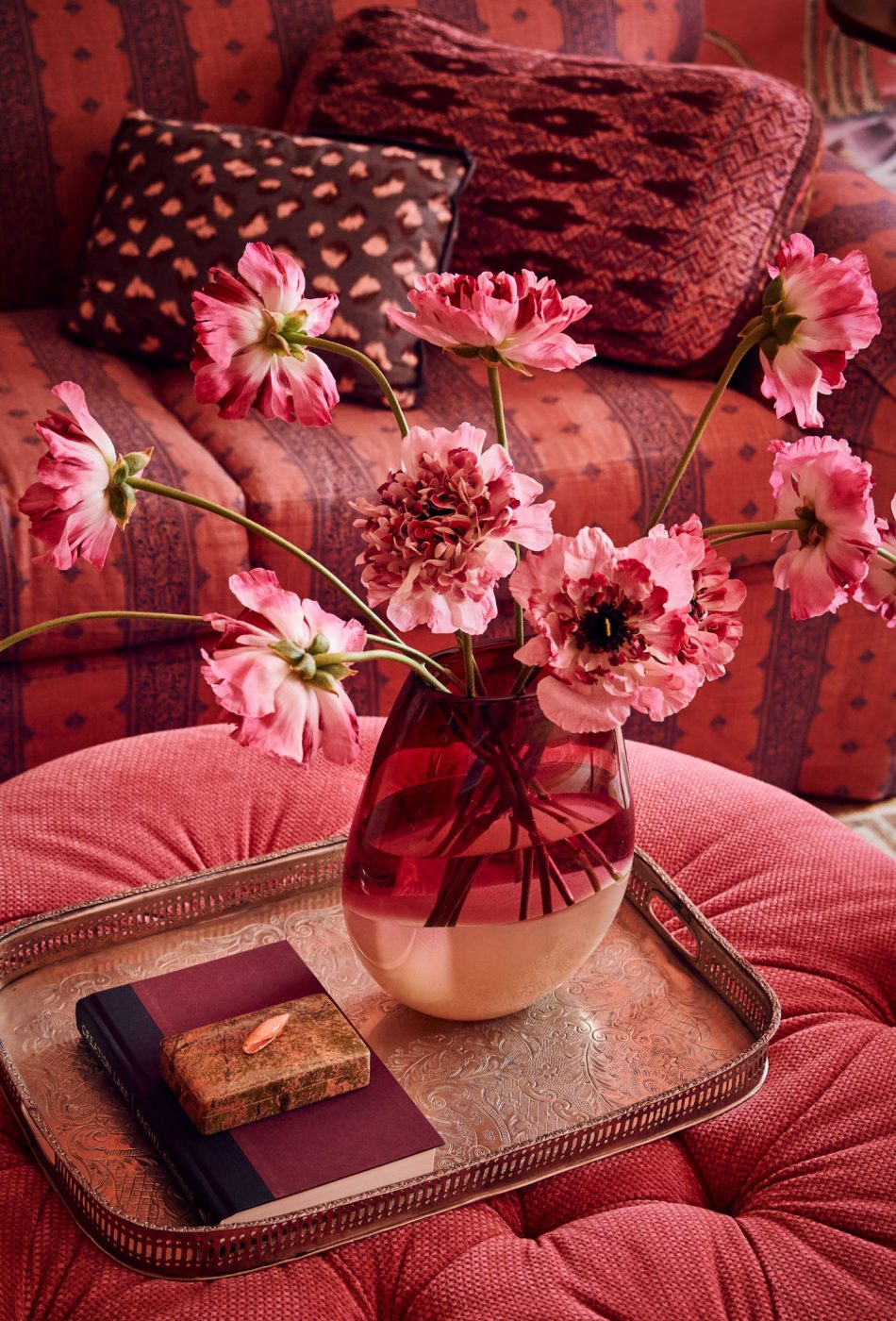
The reddish-pink shows up on the sofa and tufted ottoman and in the shelving and window shades. “It’s a pretty glamorous room to begin with,” says Miller. “But the mid-century ceiling light somehow brings it into a more contemporary chic.” She and Carrier unearthed the 1960s Orrefors crystal pendant by Carl Fagerlund at Weinberg Modern.
Still more books crowd the primary bedroom, which is grounded by natural, organic colors like browns, golds and burgundies. The volumes populate built-in bookshelves that create an alcove for the bed and also a glass-fronted French Empire cabinet. The walls here sport Carrier and Company’s strié wallcovering for Lee Jofa, and the bed is from their collection for Century.
To this mix the designers added circa 1940 mahogany bedside tables attributed to Buffa, from Orange Furniture, and a five-arm Murano chandelier of the same period from L’Antiquaire.
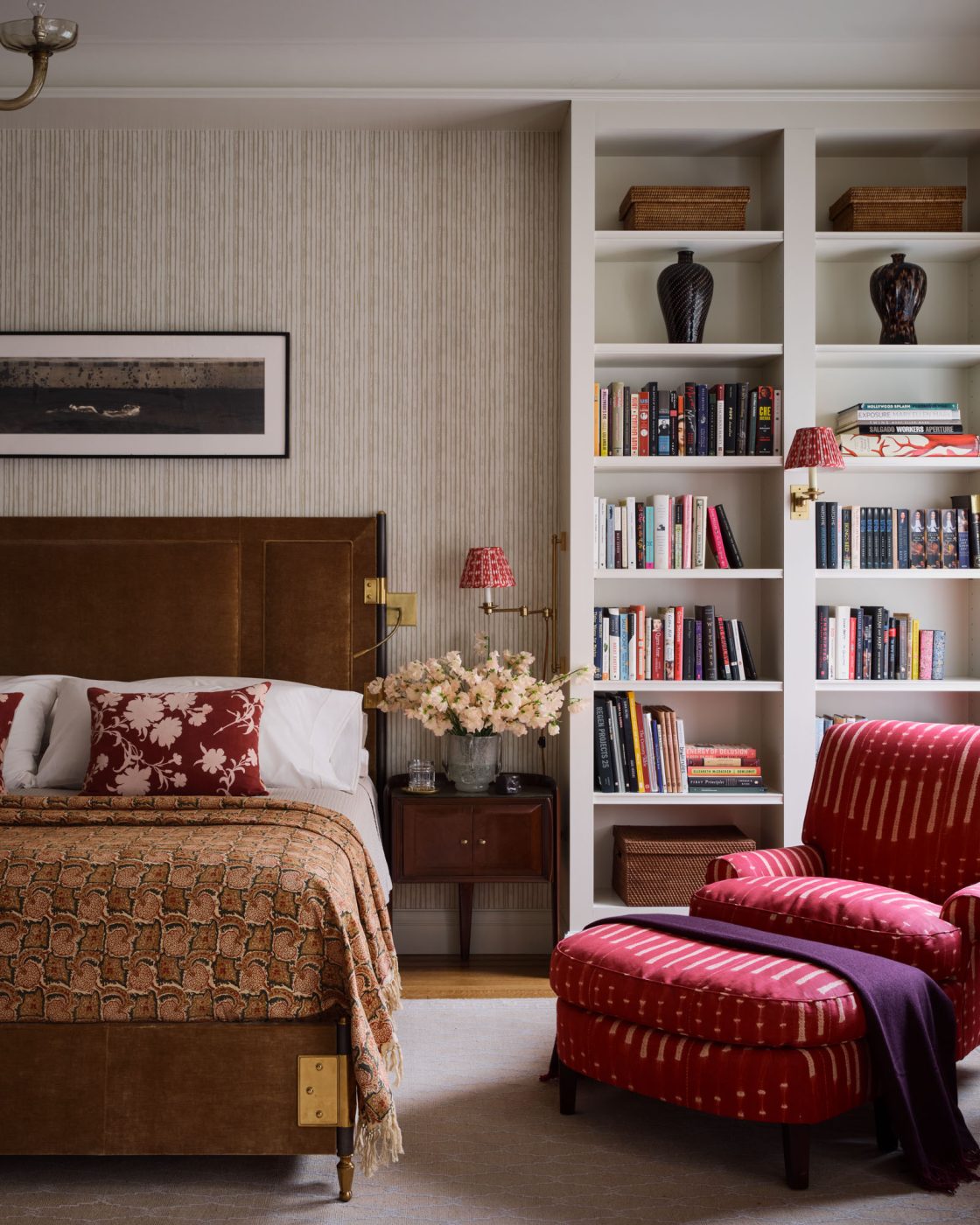

What prevents the many colors used throughout the home from being too much, says Miller, “is that they are a bit earthy, so they’re soft and tonal in a way that doesn’t feel like a crayon box.”
Crayon colors would not have fit with the couple’s urbane tastes, polished over decades of travel and reading. The sort of nuance displayed here — and the home’s easy elegance, of course — are the hallmarks of maturity. Clearly, this apartment has grown up.
